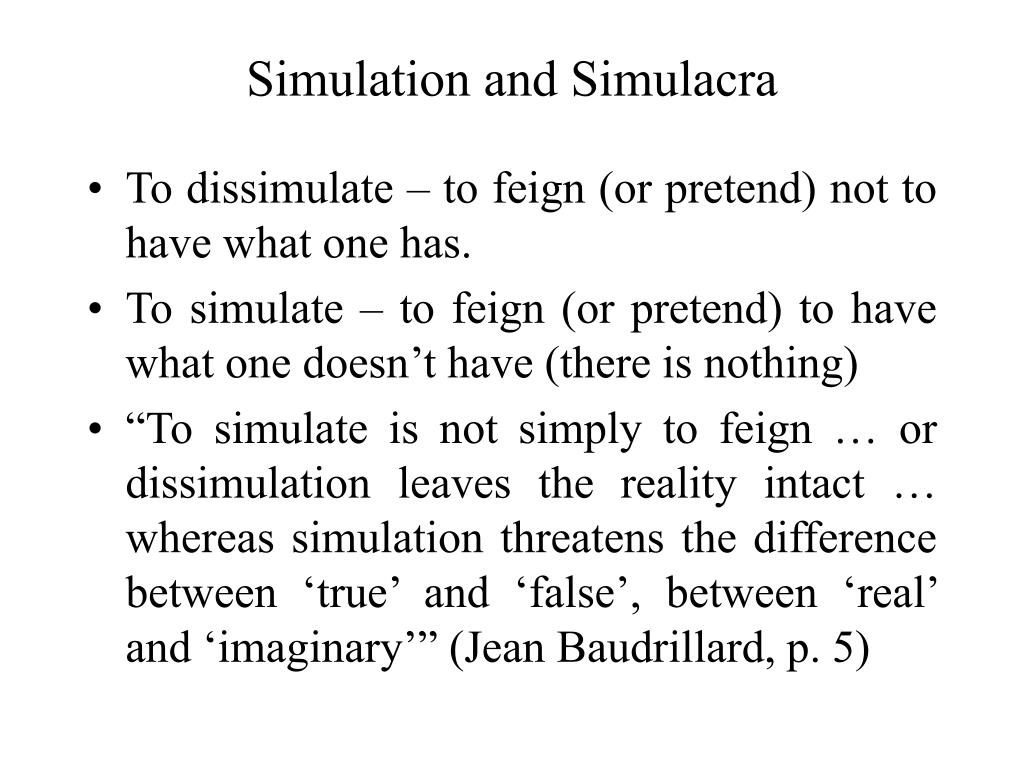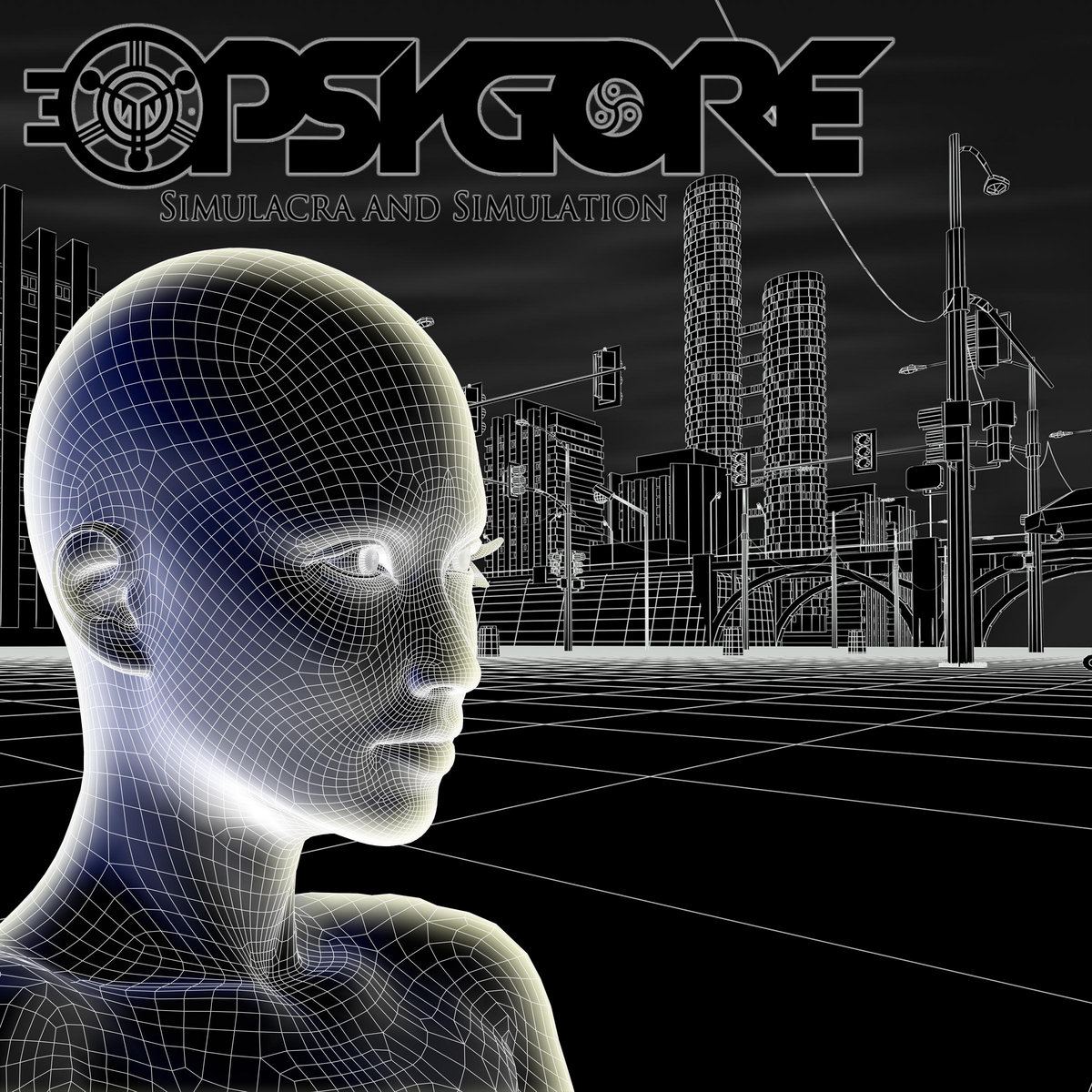

Camille writes: "what disturbs Plato is.what we would call today the 'subject position' of the beholder. While the simulacrum is defined as static, it nevertheless deceives its viewer on the level of experience, a manipulation of our senses which transforms the unrealistic into the believable. The likeness, however, is indistinguishable from the original it is "a false claimant to being" (32). Imitation, resulting in the production of an icon or image (see: image), results in the production of a representation that can be immediately understood as separate from the object it imitates. Camille analyzes Plato's opinion of the simulacrum in The Republic: "The simulacrum is more than just a useless image, it is a deviation and perversion of imitation itself - a false likeness" (Camille, 31-32).


Michael Camille elucidates the classical notion of the simulacrum in his article "Simulacrum" in Critical Terms for Art History. It is only when the viewer of the simulacrum penetrates the surface that he can tell that it differs from the thing it imitates. But in the second and third definitions we can see that the simulacrum supercedes representation in terms of the accuracy and power of its imitation. According to the OED's first definition, a simulacrum is almost impossible to distinguish from a representation (see: representation).
Simulacrum has very little modern and vernacular use, and instead is employed almost entirely in the theoretical field. Pilots and astronauts now train in flight simulators before taking to the air. A fire drill is one example, as it is a process which has all the outward appearance of an orderly escape from danger but none of the danger itself. Simulations are now a part of everyday life. Like the simulation, the simulacrum bears a resemblance to the thing that it imitates only on the surface level (see: surface), but as opposed to the simulation's mimicry of a process or situation, the simulacrum is defined as a static entity, a "mere image" rather than something that "imitat the behavior" of the real thing on which it is based (see mimesis). In total these three definitions convey the ideas that the simulation is usually of a set of actions, and furthermore is deceitful in its display of "some situation or process." In comparison simulacrum is defined as "a material image, made as a representation of some deity, person, or thing," as "something having merely the form or appearance of a certain thing, without possessing its substance or proper qualities," and as "a mere image, a specious imitation or likeness, of something" (OED). Simulation is defined first as "the action or practice of simulating, with an intent to deceive," then as "a false assumption or display, a surface resemblance or imitation, of something," and finally as "the technique of imitating the behavior of some situation or means of a suitably analogous situation or apparatus" (OED online). The terms simulation and simulacrum have subtly different meanings. Beginning as a primarily visual representation, the simulacrum (provisionally: the image of a simulation) has since been extended theoretically, and in the recent theory exemplified by the work of Baudrillard functions as a catch-all term for systems still operating despite the loss of what previous meaning they had held. What are forged or represented are not likenesses of static entities, but instead the processes of feeling and experiencing themselves. The simulation differs from the image and the icon (and the simulacrum) in the active nature of its representation. When media reach a certain advanced state, they integrate themselves into daily "real" experience to such an extent that the unmediated sensation is indistinguishable from the mediated, and the simulation becomes confused with its source. Media theorists, especially Jean Baudrillard, have been intensely concerned with the concept of the simulation in lieu of its interaction with our notion of the real and the original, revealing in this preoccupation media's identity not as a means of communication, but as a means of representation (the work of art as a reflection of something fundamentally "real"). Whether or not we live in a world of simulacra, the term is certainly important in light of how we view media.


 0 kommentar(er)
0 kommentar(er)
